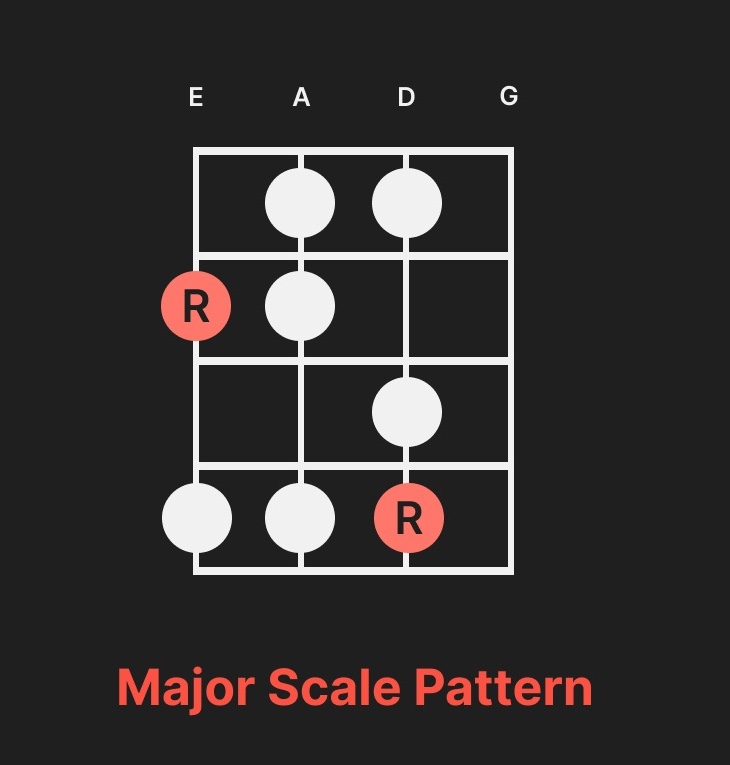Ever dream of laying down killer bass lines that breathe life into a song? Or jamming with the confidence of a seasoned pro? As Marcus Miller famously said, “Your groove is only as good as your bass scales.” And he’s right—scales are the foundation that can take your playing from good to unforgettable.
Scales are your secret weapon to make that happen. They’re like the GPS of the bass world, guiding your fingers across the fretboard and helping you craft riffs that not only sound great but feel effortless.
But let’s be honest—scales can feel overwhelming at first. How do they fit into your playing, and where should you even start?
Don’t worry; We’ve got you. In this guide, we’ll break it all down:
- What scales are and why they matter.
- The key scales every beginner bassist should know.
- How to play each scale with easy-to-follow patterns and tabs.
Let’s dive in.
What Are Bass Scales?
A bass scale is a sequence of seven notes played in a specific order, starting and ending on the same note (the root). The distance between the root notes is called an octave.
Scales define the “key” of a song, meaning they outline the notes that sound good together. These notes form the foundation for melodies, chords, and bass lines. Each scale has its own vibe—some are bright and cheerful, while others are dark and moody.
For example, the G major scale contains the notes: G, A, B, C, D, E, F#
These notes create the sound palette for a song in the key of G major.
Knowing your scales gives you the power to:
- Play riffs and lines that fit perfectly within a song’s key.
- Avoid hitting “off” notes that clash.
- Build muscle memory and develop your ear.
Think of practicing scales like doing push-ups—they strengthen your technique, timing, and creativity.
1. The Major Scale
The major scale is the backbone of music. It’s what gives songs that uplifting, happy vibe—think “Happy Birthday” or countless pop hits.
Formula and Intervals
Every major scale follows the same interval pattern:
Whole step, whole step, half step, whole step, whole step, whole step, half step
- A whole step is two frets.
- A half step is one fret.
Play it on one string to get the feel. For example, here’s the A major scale on your open A string:
A – B – C# – D – E – F# – G# – A
The Pattern to Practice
The good news? You can use a simple shape to play the major scale anywhere on the fretboard.
Here’s the pattern:

Start the pattern on any note, and you’ll be playing that major scale. For example, start on C to play a C major scale.
2. The Minor Scale
If the major scale is your sunny day, the minor scale is your midnight rainstorm. It’s emotional, dark, and perfect for rock, metal, and pop ballads.
Formula and Intervals
The minor scale has its own interval formula:
Whole step, half step, whole step, whole step, half step, whole step, whole step
For example, the A minor scale on your open A string looks like this:
A – B – C – D – E – F – G – A
The Pattern to Practice
Here’s the minor scale shape you can use anywhere on the fretboard:

Again, you can start this shape on any note on the neck and you’ll be playing a minor scale.
3. The Major Pentatonic Scale
The major pentatonic scale is a stripped-down version of the major scale, with only five notes. It’s versatile, sounds great in almost any musical context, and is beginner-friendly.
Formula and Intervals
Take the major scale and remove the 4th and 7th notes.
For example, the E major pentatonic scale is:
E – F# – G# – B – C# – E
The Pattern to Practice
Here’s the pentatonic pattern:

Want to play a D major pentatonic scale? Just find a D note on the neck and start this pattern.
4. The Minor Pentatonic Scale
The minor pentatonic is the go-to scale for blues, rock, and jazz. It’s another five-note scale that helps you nail soulful solos and improvisations.
Formula and Intervals
Take the minor scale and remove the 2nd and 6th notes.
For example, the A minor pentatonic scale is:
A – C – D – E – G – A
The Pattern to Practice
Here’s the minor pentatonic shape:

Learning these basic bass scales are a game-changer for your bass playing. They’re more than exercises—they’re tools that unlock creativity and help you groove like a pro.
Start slow, use a metronome, and focus on getting the patterns under your fingers. Before long, you’ll be jamming with confidence and crafting bass lines that turn heads.
Now grab your bass and get to it—your groove is waiting!






